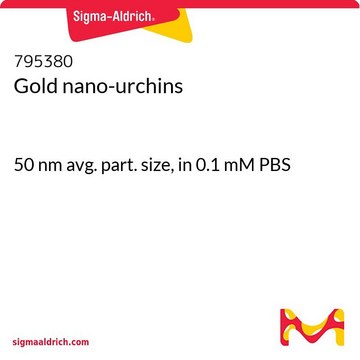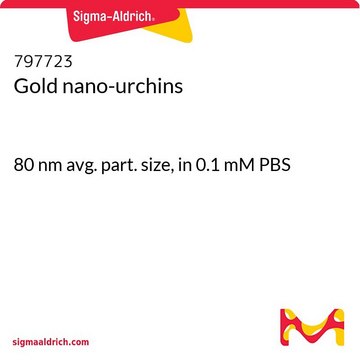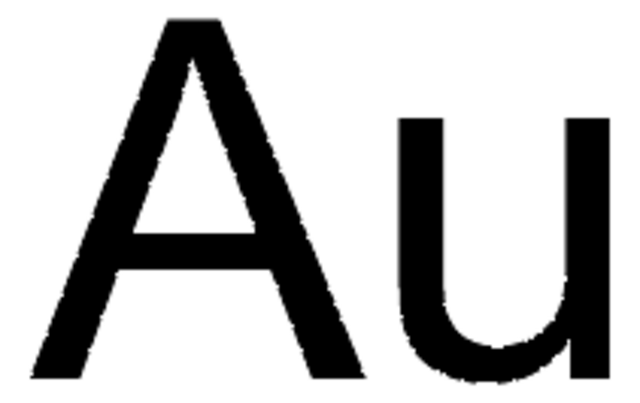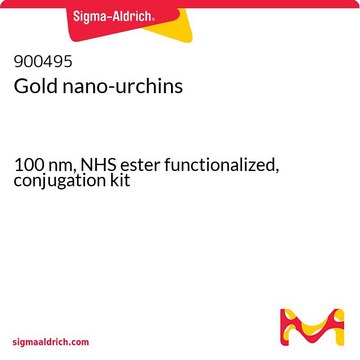797707
Gold nano-urchins
90 nm avg. part. size, in 0.1 mM PBS
Synonym(s):
Gold nano-urchins, Gold nanoparticles, Non-functionalized gold nanoparticles
Sign Into View Organizational & Contract Pricing
All Photos(1)
About This Item
UNSPSC Code:
12352302
NACRES:
NA.23
Recommended Products
description
Particles:∼5.37E+9/mL
Quality Level
form
liquid
nanourchin
OD
1
diam.
90 nm
avg. part. size
90 nm
λmax
630 nm
storage temp.
2-8°C
Looking for similar products? Visit Product Comparison Guide
Application
Gold nanoparticles are extensively used in biomedical research due to their biocompatibility, facile conjugation to biomolecules and unique optical properties arising from surface plasmon resonance. The presence of spiked nanoantenna-type shapes in Nano-Urchins enhances the plasmonic extinction resonance effect, which improves the optical limiting effect.
Storage Class Code
12 - Non Combustible Liquids
WGK
nwg
Flash Point(F)
Not applicable
Flash Point(C)
Not applicable
Choose from one of the most recent versions:
Already Own This Product?
Find documentation for the products that you have recently purchased in the Document Library.
Xiansong Wang et al.
Nanoscale, 4(24), 7766-7772 (2012-11-10)
The hierarchically assembled Au microspheres/sea urchin-like structures have been synthesized in aqueous solution at room temperature with and without proteins (bovine serum albumin, BSA) as mediators. The average diameter of an individual Au microsphere is 300-600 nm, which is composed
Eliza Hutter et al.
ACS nano, 4(5), 2595-2606 (2010-03-25)
Given the emergence of nanotherapeutics and nanodiagnostics as key tools in today's medicine, it has become of critical importance to define precisely the interactions of nanomaterials with biological systems and to characterize the resulting cellular response. We report here the
Eliza Hutter et al.
Microscopy research and technique, 74(7), 592-604 (2010-09-11)
Nanoparticles are the latest tool acquired by the science of bioimaging, serving primarily as new contrast agents, sensors, or signal enhancing agents in established and developing imaging techniques. This review focuses on the unique properties of two classes of nanoparticles:
Articles
Biomaterials science integrates smart materials into biological research, requiring a deep understanding of biological systems.
Our team of scientists has experience in all areas of research including Life Science, Material Science, Chemical Synthesis, Chromatography, Analytical and many others.
Contact Technical Service




